Whether it’s fall, early winter, or late winter, the best time to plan your spring garden is now. There are few better ways to bust the winter blues than thinking of what you can plant for awesome fresh food in the spring.
Spring gardens, depending on your resources, can include quick-growing and hardy annuals, and some hardy and pernicious perennials. Annuals, like those listed here, can be grown in containers or anywhere you have warming spring soil.
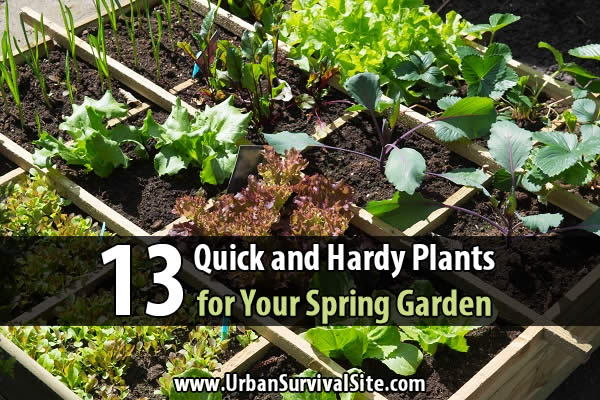
The seed for most annuals will be viable for three years. So even if you don’t plant every seed this year, it can still be grown next year. Some annuals will also self-seed, which can be good for creating ground cover or interspersing with hardy perennials.
Perennial plants are a great idea for permaculture and long-term gardening abundance. Compared to annuals, perennials need a bit more preparation. This includes finding a place the plant can remain permanently, compost, mulch, and a well-dug garden bed. Once the perennials are established, they will continue producing spring and summer food for the foreseeable future.
Few plants are quicker, faster, or hardier than the following thirteen. They’re also quite delicious, and very versatile for your cooking endeavours. Ten of these plants are annuals, and the final three are some hardy perennials. Two of these perennials produce from early spring to mid-summer, or even late summer if you have a cool climate.
13 Quick and Hardy Plants for Your Spring Garden
Now on to the list:
1. Radishes – A staple in any spring garden. Radishes are hardy, love a nice cool day, and bolt when it gets too hot for them. For the best quick radishes ever, grow “Easter Egg” radishes. These small, fast growing, and multi-colored radishes will add spice to all your spring salads. “French Breakfast” radishes are another bright colored addition, and both these varieties are easy, fun, and fast to grow. Radishes are perfect if you’re gardening with children, too!

2. Peas – These beautiful, nitrogen-fixing vines are a spring staple in many a northern garden. Peas do best with cool nights, and get sweeter when they have a touch of frost. If it’s too warm, the peas won’t germinate. The easiest and quickest peas to grow are edible pod varieties, such as Sugarsnap. Shelling peas take longer to come to maturity as compared to the edible pod peas.
No matter what variety you grow, you can always let overly mature pods fully mature and save your own seeds. If you have too many pea seeds, plant them anyway and harvest the 4-6 inch shoots for salad or stir-frying, they taste exactly like sugarsnap peas without the longer wait, and if you don’t harvest them all they’ll produce peas too. Pea shoots, grown indoors in a grow tray, can be used as a “cut and come again” green, as long as you cut them above the first small set of stem leaves.

3. Lettuce – A staple of nearly all salads, lettuce loves coolness. The quickest lettuce to grow in the spring is loose-leaf varieties. Oakleaf lettuce in red and green, speckled lettuce, and many other pretty varieties are in the loose-leaf category. Strew a section of your garden bed with a mix of these lettuces and let it grow till 3-4 inches high. Then, cut a section just above ground level (leave the roots) and let it grow again. By doing it this way, you’ll have fresh lettuce within a few weeks of planting and the bed will produce until the lettuce bolts.

4. Orach – This is an interesting vegetable, slightly similar to spinach. Russian Orach is red leaved, and looks a great deal like Lambs Quarters (you can eat that too), with the same spade-shaped leaves and tall growing stem. This is a good green, and can be eaten raw in salads, or cooked like spinach or chard. If you let it go to seed, it will self-seed indefinitely, and you’re likely to find it growing anywhere the seed stems go. It is a hardy little plant and, unlike lettuce, it never gets bitter so you can harvest even from the flower stalks.
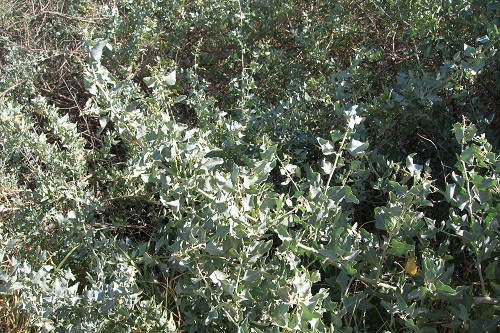
5. Spinach – Considered a mainstay in healthy eating, this brilliant green plant loves the early spring weather best. Cool nights, and only slightly warm days cause spinach to thrive. Plant in rows, and trim the leaves as they grow. You can gain many heavy harvests from just a single row of spinach if you give them time to grow back between cuttings. As soon as it warms up a bit, the spinach will start going to seed. You can either save seed, or if you want, you can let it self-seed a small area.

6. Chard – If you have slightly cooler nights throughout the year, Chard will grow and thrive all summer long. This vegetable is easy to grow, and can even be mixed in as a “cut and come again” green with your lettuce for early spring harvests. If you want chard all season long, plant it in rows and harvest the larger leaves as they reach around 6 inches long. Chard goes well in salads, as a cooked green in soups, or on its own with a splash of lemon and butter.

7. Kale – A member of the Cole family, kale is a mainstay for any garden and is especially awesome as an overwinter green for early spring harvesting. Kale will come up in the spring, as a green, if it is seeded in the fall with just enough time to get five to ten leaves before the snow falls.
Kale tastes the sweetest if it has a touch of frost right before harvesting. However, kale will also grow and thrive through the hottest summer. It’s hardiness for cold is what makes it an excellent overwintering vegetable, or early spring crop.

8. Bok Choy – An old Chinese green that was frequently grown in northern mining towns, this plant is a quick grower and can thrive in the shortest of seasons. You can let it grow into a sturdy, dense plant before harvest. Or you can incorporate it into a cut and come again bed and keep the plants short by consistent harvesting. For continuous growing, harvest individual leaves or cut the plant off at the ground for an easier harvest. Bok Choy goes well in salads and stir-frys.
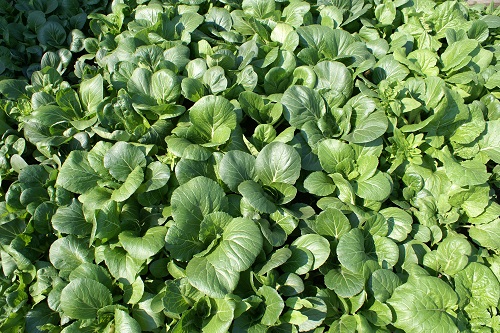
9. Sui Choy – This is a smaller and stronger flavored version of Bok Choy. Sui Choy grows fast and is a dark rich green. Its small leaves are an excellent addition to salads, soups, or stir-frys, and it is hardy even in consistent frost conditions. It can be harvested the same as Bok Choy.
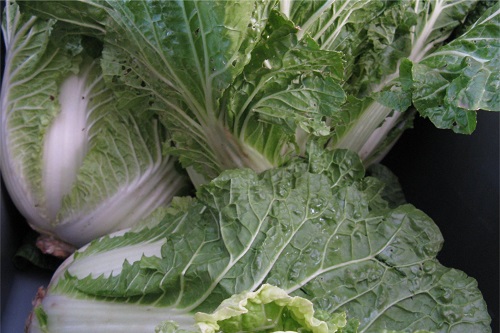
10. Miner’s Lettuce – This is a formerly wild green that loves shady and slightly damp locations. If you happen to be growing Asparagus, this would be an awesome ground cover to grow under it. Miners Lettuce is tasty and crunchier than regular lettuce. It’s easy to grow, too. Just scatter the seed in a shady garden corner in the spring when there is still frost, and let it grow. Because it was originally a wild plant, it will self-seed very easily. Miners Lettuce looks different from regular lettuce, each leaf being a single stalk with a circular leaf growing around it and a flower on the end. Once established, it can be harvested until early fall. It is a spreading plant, but its tastiness makes it well worth adding to any garden.
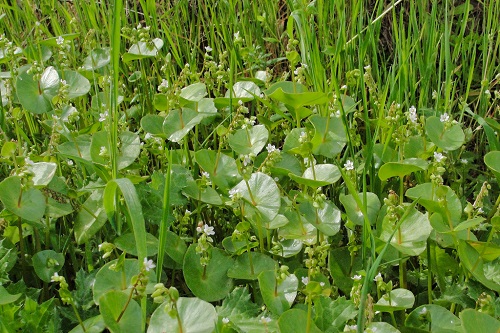
11. Chives – Chives and other green onions, like Egyptian Walking Onions, thrive in cool spring weather. Most nurseries have chive plants available for spring planting. It will take one season for a chive plant to become well established. After the plant is established, it will be one of the first plants to begin re-growing in the spring. Keep the chive plant mulched, and trim off the leaves you want to use. If you want to propagate your own chives, simply dig up part of the clump, divide it, and replant. Walking onions are similar to chives, except they propagate by replanting themselves and can spread more readily than chives.
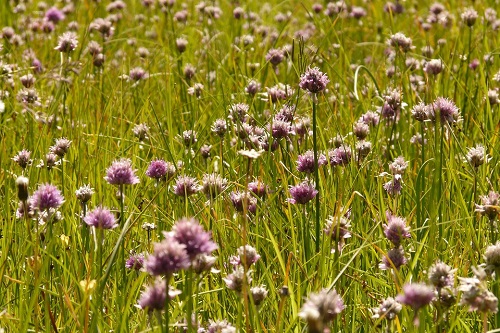
12. Asparagus – This is probably the crown of spring vegetables. To begin an asparagus bed, you’ll want to start with three year old male crowns and a well dug, fertilized, and tilled garden bed. After planting, it will take two years before you can harvest the first pencil thick stalks. After three or four years, your asparagus bed will be producing enough to not only give you an abundance, but also provide enough to share. Asparagus comes up shortly after chives and, to those who like it, is a very tasty spring vegetable. One well-tended asparagus bed can produce for over 20 years. Combination planting with asparagus and a more ground-covering and shade tolerant crops is also be a good idea. Miner’s lettuce or strawberries might be good options for companion planting.

13. Rhubarb – I’m not sure if rhubarb counts as a fruit or as a vegetable, as it can be used for either sweet or savory applications. This plant produces edible stalks, but poisonous leaves. You can grow rhubarb from seed or from a root division. Most people who have a rhubarb plant would be happy to provide you with one because dividing the root helps keep the plant healthy. Rhubarb is exceptionally hardy and tenacious. One person bulldozed a rhubarb plant out of the way to build his house. He ended up with 6+ rhubarb plants instead of one.
Rhubarb grows just as fast as chives and asparagus, and can be harvested throughout the summer as long as the flower stalk is removed. Rhubarb can be harvested as soon as the stalks are over 1 inch around and about 12-18 inches long. The size of fully grown stalks will vary between individual plants based on maturity and how well the plant is fed. Harvest the outer or largest stalks, and break the green leaf off. You can use the leaves around the rhubarb plant for mulch. Add a thick manure or compost mulch in late fall or early spring for the best plant growth.

Source: urbansurvivalsite.com
Like this article?
Check out these similar articles:
11 Useful Herbs You Can Grow In Containers
15 Fruits And Veggies You Can Grow In Buckets
3 Winter Gardening Techniques and 6 Plants for Winter Gardening
OTHER USEFUL RESOURCES!
Blackout USA (EMP survival and preparedness guide)
Bullet Proof Home (A Prepper’s Guide in Safeguarding a Home )
Backyard Innovator (All Year Round Source Of Fresh Meat,Vegetables And Clean Drinking Water)
Conquering the coming collapse (Financial advice and preparedness )
Liberty Generator (Easy DIY to build your own off-grid free energy device)
Backyard Liberty (Easy and cheap DIY Aquaponic system to grow your organic and living food bank)
Family Self Defense (Best Self Defense Strategies For You And Your Family)
Sold Out After Crisis (Best 37 Items To Hoard For A Long Term Crisis)
US Water Revolution (Generate Your Clean Water Anywhere)
Alive After The Fall (Key Survival Situation Procedures and Knowledge )
Mega Drought USA:(Discover The Amazing Device That Turns Air Into Water)
Survive The End Days (Biggest Cover Up Of Our President)
Survival MD (Best Post SHTF Medical Survival Guide Ever)


